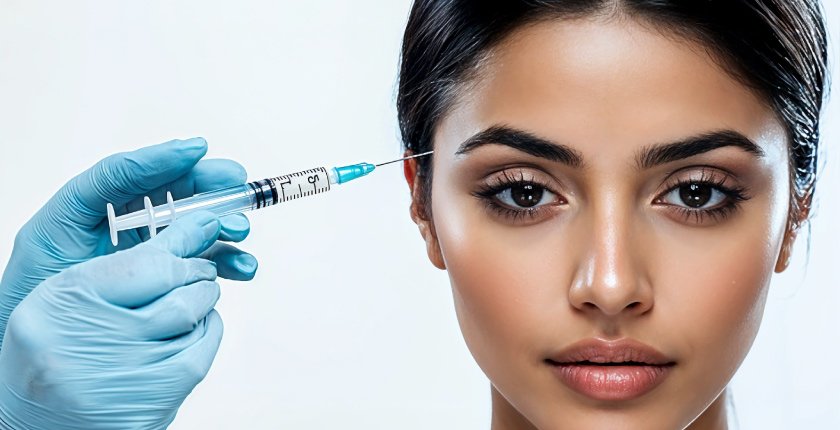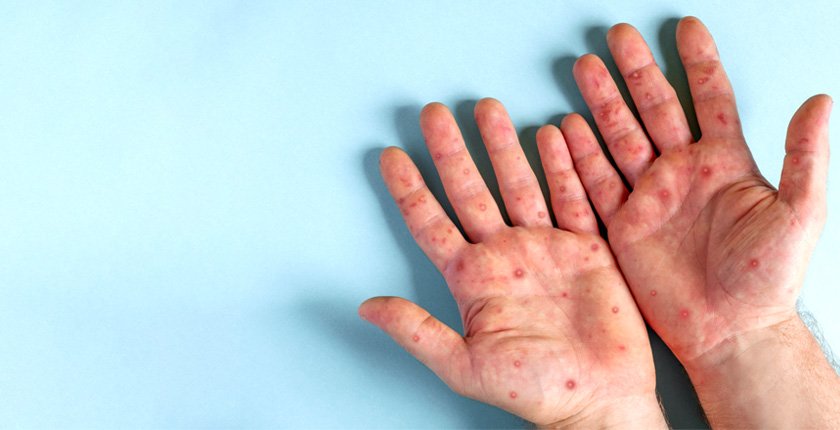

BEYOND BEAUTY: MEDICAL BENEFITS OF BOTOX AND FILLERS TREATMENT
Introduction
Over the recent past decades, the use of Botox and dermal fillers has been increasingly adapted from the normal aesthetic application to a very critical medical process. By extension, the injected agents have traditionally been recognized for the eradication of facial rhytids, but today, they have been associated with a host of clinical advantages. The article will consider the changing plight that Botox and fillers have set in as part of medical attention, their mechanism, effectiveness and safety, appropriate practitioner selection and post-care management.
Overview of Botox and Fillers
Traditionally, Botox and dermal fillers were considered beauty aids and used as injectables. Administering fields now reach far ahead into medical disciplines such as relieving chronic migraines to facial deformities. This aspect of treatments has led to underlining the fact that treatments are versatile and can have potential beyond aesthetics alone. The Transition from Cosmetic to Medical Uses.
The Shift from Cosmetic to Medical Uses
Initially, Botox was used for wrinkle relaxing, while fillers were used for the enhancement of facial volume. It is through the constant usage that therapeutics was noted by the medical fraternity from the treatments. The changing use patterns from cosmetic to medical resulted from research studies and clinical trials done on these products through regular use. They found out that the products opened up new uses and benefits.
Understanding Botox and Fillers
What is BOTOX?
Botox is a neurotoxin purified, derived from a bacterium called Clostridium botulinum. Since it is a neurotoxin, it works by the temporary blocking of nerve signals to muscles, reducing the activity of the muscles temporarily. It acts on action, not just as an agent reducing wrinkling but in most medical states caused by overactivity of muscles.
What are Dermal Fillers?
Another would be dermal fillers, which consist of injecting such substances beneath the skin, hence restoring lost volume, softening lines and reshaping the facial contours. The fillers used, however, are mainly done with hyaluronic acid, extracted from the naturally existing substance in the skin, whose function is to provide hydration and elasticity to maintain the skin.
How They Differ from Each Other
Although both are reliant on an injection, the indications are different. Botox is a muscle relaxer and therefore used in the correction of dynamic wrinkles. Fillers add volume and are used in cases of static wrinkles, face symmetry and loss of volume. The mechanisms of action for each are distinct from the other, producing only muscle relaxation to add to the methods of volume addition in areas injected.
Medical Benefits of Botox
Treatment of Chronic Migraines
The most common medical application of Botox is associated with the treatment of chronic migraines. When injected in areas that surround the head and the neck, the patients experience a massive reduction in the intensity and frequency of the migraine attacks.
Management of Excessive Sweating (Hyperhidrosis)
IN excess sweating, Botox is also injected to control the not-so-conducive condition. By blocking nerves responsible for the manufacture of sweat, Botox takes the lead in giving the best relief to patients who have always struggled with this embarrassing condition.
Relief from Muscle Spasms and Disorders
Botox treats muscle spasms and disorders. For example, cervical dystonia is a condition whereby the muscles in the neck contract involuntarily. The mentioned medication influences the treatment by ensuring relaxation, a factor that ensures a reduction in pain and discomfort.
Use in Treating Temporomandibular Joint (TMJ) Disorders
The TMJ is described as a hinge-shaped joint that connects the lower jaw to the temporal bones of the skull in front of each ear and if jaw muscles are contracted, Botox is effective in the management of malfunction and pain of the jaw joint along with its surrounding muscles due to such effect.
Botox for Overactive Bladder
Botox Injection is also done in the treatment of an Overactive Bladder, which could be identified by the symptoms of urinating too often and sudden urges to urinate Botox injected into the bladder muscle helps to reduce its urgency and frequency and hence helps give relief to such patients.
Medical Benefits of Fillers
Restoring Facial Volume in Aging Patients
Connective tissues, which eventually sag, resulting in the development of wrinkles, are lost. The face is filled with dermal fillers in places such as the cheeks, temples, and under the eyes to reproduce the volume that was lost in the sagging of the face.
Treatment of Facial Deformities and Congenital Conditions
Apart from cosmetic changes, these dermal fillers are appointed for use in patients with facial deformities and even congenital anomalies. They may be inserted in sunk scars to enhance the look of the face or used in changing facial symmetry in those with congenital asymmetries.
Fillers for Scar Correction and Repair
Aside from the facial deformities cited above, fillers are helpful in the treatment or repair of scarring from acne, injury or surgery. In the rebalancing of facial symmetry, dermal fillers help firm up the depressed scars, offering a leveled skin surface and look.
Enhancing Facial Symmetry
Facial symmetry is a constituent that mostly goes in line with beauty, whereby fillers can always be applied to create harmony in the facial contours. They put in a more symmetrical look, balancing from lopsided lips or sunken cheeks.
How Botox and Fillers Work for Medical Conditions
Mechanisms of Action
Simple mechanisms of action of Botox and fillers explain their efficacy. Botox prevents the release of acetylcholine, a particular neurotransmitter responsible for signaling in part muscle contraction; hence, making the targeted muscles relaxed becomes possible. On the other hand, fillers are usually made of hyaluronic acid and other materials, which take up the space of a treated area. They may even out wrinkles, fill in scars and highlight facial contours.
Comparing Efficacy and Outcomes
Effects and results of Botox and fillers vary from the condition and individual response to it. Generally, Botox provides temporary relief and hence it has to be maintained for several months. The fillers may last several months up to just over a year depending on the type used and treated areas. Botox works well for either when one is a skilled practitioner.
Patient Experience and Case Studies
The majority of patients reported that the mode of treatment applied to them works and this treatment impacts their daily life. For example, the status of their chronic migraine becomes relieved while the frequency and the strength of their headache are reduced. Those patients whose facial volume has been altered as a result of the filler therapy are also experiencing the sensation of being younger and fresher looking.
The Safety and Risks of Botox and Fillers in Medical Treatments
Common Side Effects
Like all other medical therapies, therapy with Botox and fillers may have some potential side effects. Swelling, some possible mild soreness and bruising at the site of injection often cause standard side effects of Botox. Fillers can produce those same results but can also cause bumps or lopsidedness if not injected properly.
Rare Complications
However, very few have those complications. Very rarely do complications such as allergic reactions, infections or even perverse actions like one eyelid drooping or unequal facial lines result from Botox and fillers. Very rare complications such as those will be present in an experienced practitioner’s work.
Safety Precautions and Best Practices
It is also essential to follow the precautions and safety measures in Botox or any other Dermal filler operations to uplift the safety chances from risks and hazards. These will include the following administering the treatment by an experienced and qualified practitioner, after-treatment care and follow-ups, even supportive reporting to the health provider if any reactions manifest.
Treatment Protocols and Procedures
Typical Treatment Plans for Various Conditions
Treatment regimens vary like the treated condition. Chronic migraines need injections every 12 weeks. Restorations of volume on the face are repeated every 6-12 months for the fillers.
Frequency and Duration of Treatments
The frequency at which a patient receives Botox or fillers depends on the indication and the patient’s response to the said treatment. Normally, Botox may last between a period of 3 and 6 months before repeat treatments are carried out. Sources give durations ranging from 6 months to a period of 2 years on the duration that the fillers last, depending on the type and location used.
Integration with Other Therapies
It is also possible for both Botox and fillers to interact with another treatment that has the same goal, so the results can improve equally. For a better example, certain conditions treated with Botox could work in combination with physical therapy, such as in some cases of TMJ treatment. Moreover, there can also be cases in which laser treatments combine with fillers for full face rejuvenation.
Choosing the Right Practitioner for Medical Botox and Fillers
Qualifications and Expertise
What matters most is the choice of practitioner, basically meaning how well the filler /Botox treatment will work: in the magnitude and safety. Attend to a well-trained practitioner, experienced, with evidence of giving the treatments on medical grounds.
Importance of Specialist Consultation
Consultation with a specialist is a must before performing Botox or filler.
Investigation into the medical history of a client
Your practitioner will discuss your needs depending on which exact application will be designed to your specifics.
Patient Reviews and Recommendations
What the patient said about the practitioner, is going to be testimony of his level of care. You can look for the reviews written by earlier patients, mainly those suffering from similar medical conditions and who have been treated exactly as yours.
Aftercare and Maintenance
Post-Treatment Care Guidelines
Good aftercare is the surest way to achieve the best results with the least possible side effects. This can include under-poking to not over-inject and cold compresses to reduce bruising as well as any other prophylactic precautions suggested by your practitioner.
Managing Expectations and Results
This is one of the most important occurrences to ensure satisfaction. When it comes to Botox and Fillers, the achieved results are substantial. Nevertheless, everyone differs from the other in this case. It makes it crucial to note that maintenance treatments are also required to be repeated periodically.
Long-term care and follow-up
It is one of the important sections that crosscut under the care of Botox and fillers. Regular visits to a preceptor have a load of positive effects in helping one to follow through and monitor one’s progress. Jotting down the expected challenges is also impactful, so much so that no opportunity comes through and nothing goes unnoticed by attention.
Conclusion
Summary of Medical Benefits
Thus, it has set the use of botox and fillers in chronic migraine, TMJ disorders, restoration of facial volume, and scar correction in definite perspectives, proving to be good tools in the versatile management of medical conditions.
Encouraging Consultation for Medical Use
If Botox or filler is necessary because of a medical condition, one needs a consultation with an able specialist who will guide them through the process and aid in the determination of making informed choices regarding the treatment options.
Final Thoughts on the Role of Botox and Fillers
As Botox and fillers find wider uses than just as testaments of beauty, so is their use being adapted to the treatment of medical conditions. If administered correctly and cautiously, the relief that can be provided with the help of Botox and fillers is incredible and quite a boon to the quality of life. Visit Our Hospital.
FAQs
1. What is the Key difference between Botox and fillers?
Botox is a prescribed medication used to reduce wrinkles in the skin by paralyzing some muscles and filling the face. For wrinkle and line reduction, the face can be recontoured back to fullness, especially with the use of dermal fillers.
2. In what other medical conditions is Botox used other than cosmetic?
Botox is utilized for chronic migraines, severe perspiration under the armpit, cervical dystonia or contracture of muscles, temporomandibular joint malfunction, eye squints and overactive bladder.
3. What is the Effect Duration of this?
Effect duration varies slightly even with Botox, being 3 to 6 months with the conditions being treated.
4. What are the fillers’ side effects?
Common side effects of fillers include bruising, swelling and slight pain at the region of injection.
5. How do fillers add to the corrections of facial discrepancies?
Fillers are added by injection of volume to the areas that have to be corrected further to attain symmetry or balance to the appearance.
6. Can botox be done in combination with other treatments?
Yes, Botox can be combined with other treatments, for instance, physical therapies or other cosmetic services, depending on the objective to be met by the results.
7. What qualifications should I look for in a practitioner?
Board certification, long experience with Botox and fillers,specialization exactly in the treatment that you are going to a very high degree of expertise.
8. How often should I get treatment with filler?
Fillers usually need to be refilled within 6 – 12 months depending on the type of filler and area treated.
9. What are the long-term risks of Botox and Fillers?
The long-term risks are almost negligible if treated by a well-trained Practitioner. All safety measures should be taken with regular follow-ups.
10. What is the post-operative care that I need to take care of after the treatment?
You may usually notice some minor swelling, bruising and redness at the injection sites. Typically, this will subside to be mild after two to four days. As always, results will be best by following the aftercare instructions given by your practitioner.









